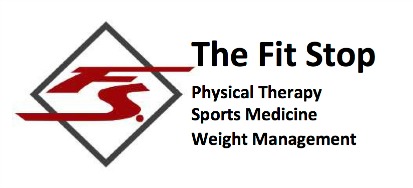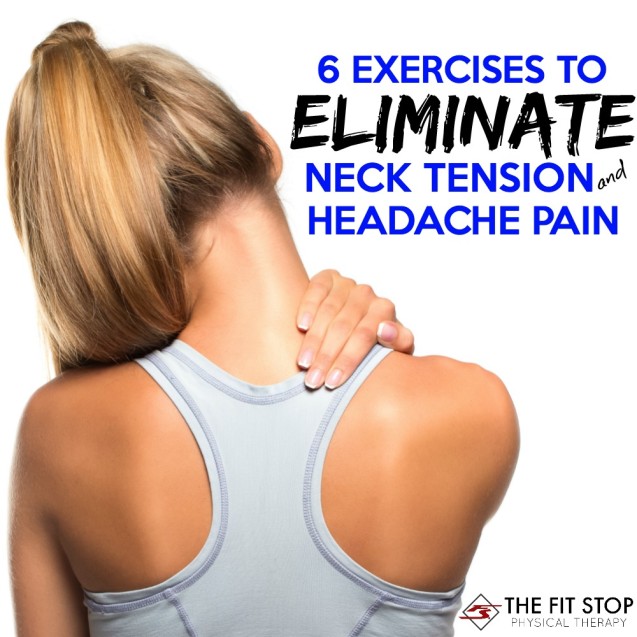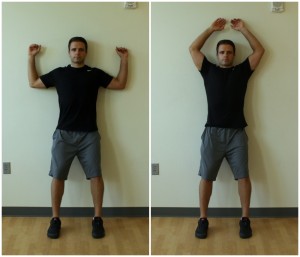How to decrease neck tension and headache
I have a question for all of you fellow laptop cradlers and cell phone junkies: Are you often plagued by neck or shoulder pain or tightness which slowly works its way up the back of your head and becomes a nagging headache? Often you eventually feel the headache settle behind your eyes and you can even get blurry vision. More often than not you blame it on your desk, on staring at the computer screen or on your work. Although these are contributing factors, the biggest problem is with your posture! Today one of our spine specialists, Cameron Garber, PT, DPT is talking all about shoulder and neck tension/pain – what it is, why you get it, and what you can do to eliminate it!
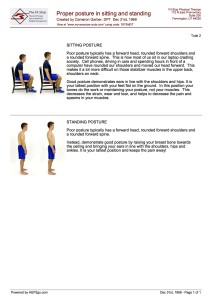 Check out these two examples of sitting and standing posture and see how you measure up. Are you close the positioning shown on the good example, or are you slumped in your chair with your head forward and your shoulders rounded like me? If you are tend to resemble the poor posture example we have some work to do.
Check out these two examples of sitting and standing posture and see how you measure up. Are you close the positioning shown on the good example, or are you slumped in your chair with your head forward and your shoulders rounded like me? If you are tend to resemble the poor posture example we have some work to do.
When assessing these types of symptoms the first thing I have people do is the “Wall Angel” exercise. I have them stand next to a wall facing outward with feet shoulder width apart and about 4-6 inches from the wall. Next they lean against the wall with bum, shoulder blades and head touching the wall. This gives me a great idea about the nature of their headaches and a good general screening of their posture. Next I have the patient move their arms up and down like they are making a snow angel on the wall. They do this while trying to keep their arms against the wall the whole time. If this is too painful, hurts in the shoulder joint, or seems impossible, you need to get in to see your PT ASAP! You are tight or injured and need some professional help.
This simple screening exercise gives me a lot of information I can use to help patient identify where their poor posture is coming from. There are 4 main ways: Rounded shoulders, stiff lumbar spine or lower back, stiff thoracic spine or upper back, and stiff cervical spine or neck. It can be one or a combination of these factors which are affecting your posture.
Whenever the shoulders are rounded it automatically brings the head forward and flexes the low back and upper back making them rounded as well. This also forces us to extend our neck to keep us from looking down at our toes. With good postural alignment the weight of our arms, shoulders and our 8 to 12 pound head rest firmly on bony support. (That’s right, your head weighs around 10 pounds! “Look at the size of that melon! It’s like an orange on a toothpick.” Name that movie) Instead, with poor posture our muscles, ligaments and tendons have to work overtime to support our poor postural performance.
Because the muscles of your neck and upper back are always working overtime it starts to make those muscles tighten up in revolt. Eventually this tightness leads to the sore back, shoulders and neck which cause your headaches!
So, how then do we combat this? We all know that we should have better posture, but what can we do to actively start making a change? The key is to begin to strengthen those overworked muscles and relax the muscles which have tightened in response to prolonged positioning. The idea is to begin strengthening the muscles of the upper back. Those muscles between the shoulder blades which roll your shoulders back when you pinch them together. Give it a try. Try to pinch your shoulder blades together. You’ll find your sternum rises, your head will center itself over your shoulder and you will decrease the rounding of your shoulders and upper back. Hold it for a second. This kind of feels good right? If not you might be really tight!
To start correcting the bad posture I’ve attached my 6 favorite exercises for eliminating your headaches (click on the image below for a printable PDF). They work by strengthening the postural muscles through pinching those shoulder blades together in lots of different ways. They also work to stretch out the tight muscles in your chest which round your shoulders and your back. This helps improve upper back mobility and feels generally awesome! These exercises can be done with simple home exercise equipment. All that is required is a piece of exercise band and 3 foot foam roller. (If you don’t have one I recommend these from Amazon: CLICK HERE for exercise band; CLICK HERE for foam roller.)
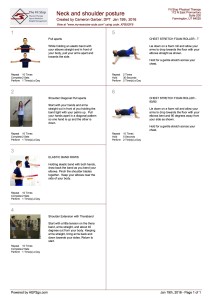
Start doing this short 8-10 minute routine daily and then taper as your symptoms lessen. Incorporating these exercises into your routine long term will be critical in keeping your symptoms at bay forever!
If you find you need some guidance with these exercises, they aren’t quite getting the full job done, or you are still having pain, make sure you come in and get evaluated. Your Fit Stop physical therapist can make sure you are getting the most out of these exercises and can custom tailor a plan just for you. We want to make sure you stay focused on your work and life. No more taking time out to rest your weary head. Fit Stop can get you eliminate your tension headaches and get you feeling better fast! Click the links below to contact the Fit Stop clinic nearest you…
Heber City Salt Lake Farmington Murray
Cameron Garber, PT, DPT
Fit Stop Physical Therapy
